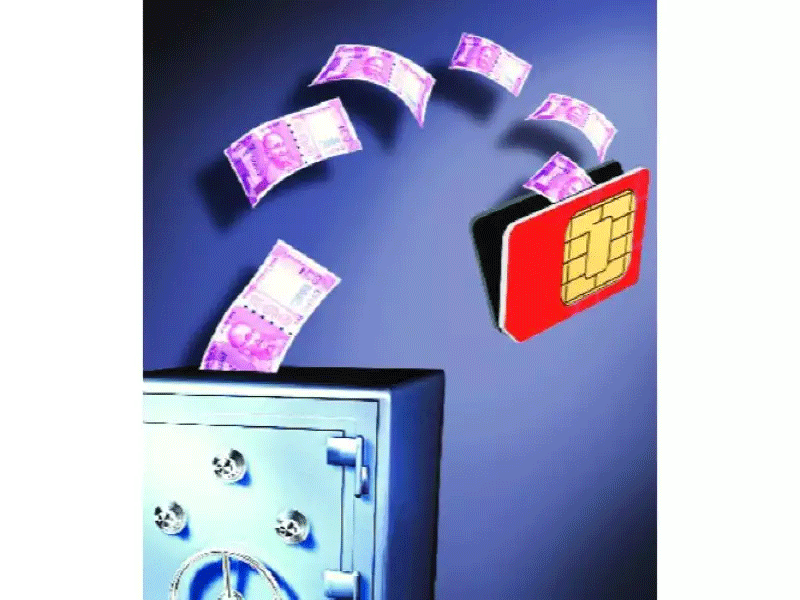

A cyberfraud called ‘SIM
Swap’ has tricked several people across the country. Not really new, the scam
going for months now continues to claim victims across the country. The
cybercells of Police departments in cities like Kolkata, Bengaluru and Delhi have
already reported several instances of ‘SIM Swap’. This new fraudulent
method is used by criminals to trick gullible smartphone users who end up
losing money in matter of minutes.
And if you think that only
digitally-illiterate people fall prey to this scam, you got it wrong. Several
tech-savvy urban youths too have ended up falling for this cyberfraud. In fact,
criminals have devised several ways to commit ‘SIM Swap’ frauds. Here we
look at one of the most common technique used to trap people.
SIM Swap is simple
and you can be trapped just by sharing information on phone
SIM Swap or simply SIM card
exchange is basically registering a new SIM card with your phone number. Once
it is done, your SIM card will become invalid and your phone will stop
receiving signal. Now, once the miscreants have your phone number, they will
get OTPs on their SIM card. With this they can initiate bank transfer and even
opt to shop online after getting OTPs.
It all starts with an unknown call claimed to be from
Airtel, Vodafone or any other service provider
You will get a call from
a person who will pose as an executive from Airtel or Vodafone or Jio or Idea.
He or she will then tell you that it’s a routine call to improve call drop
problem or signal reception on your phone. He/she can also promise to help you
get more mobile data or increase mobile internet speeds or simply can ‘guide’
you to migrate to a 4G SIM card.
Entire
conversation will be to get your 20-digit SIM number

The scam caller will try all
means to get your unique 20-digit SIM number. Every SIM card has this 20-digit
number. Look for it at the back of your SIM card. The scamster will try to
convince you share your 20-digit unique number to a phone number to get the
desired service (improve call drops or the one stated above).
You will be requested to press 1 or authenticate this Swap
After convincing you to
send the unique SIM number, the scamster will tell you to press 1 or simply
authenticate the SIM swap. The process over here is that the scamster after
obtaining the unique SIM number will initiate the ‘Swap’ with your telecom
operator officially. For example, if you have a Vodafone SIM, the scamster will
use a new Vodafone SIM to officially process the exchange of SIM card. Now,
Vodafone will send a confirmation SMS to your phone number and the scamster
would want you to press 1 to authenticate the SIM Swap. With this, Vodafone
will understand that you have officially initiated the SIM Swap but then the
attacker will end up hijacking your phone number.
Your mobile
will stop receiving signal altogether
Once the swap is successful,
your SIM card will stop working and you will not get any signal on your phone.
On the other hand, the scamster’s new SIM card will get full signal with your
mobile number.
How can you lose money if your SIM is hijacked?
It is basically a two-step
process. And sadly, SIM Swap is the part two of the fraud process. The
scamster, in most cases, already has information about your banking ID and
password. All they need is the OTP that you get on your registered mobile
number to make financial transactions.

How did they get your banking details beforehand?
This is mostly through
phishing attacks. If you happen to open a fake version of your banking website
then your details automatically get compromised.
They may ask
Aadhaar number to verify your identity. Never ever share Aadhaar number over
phone.
Just imagine the
possibilities of fraud if the scamsters have got access to your phone number as
well as Aadhaar number. These days most services can be accessed using both
these together and once your Aadhaar number and phone number is available, it
can lead to serious identity theft.

Do not switch off or mute your phone to ignore anonymous
calls
In most cases, once the
scamster has successfully imitated a SIM Swap, he or she will disturb you so
that you get angry and switch off or silent your phone. This is crucial to buy
time for scamsters. Usually, telecom operators take around four hours to
activate a new SIM. So, the scamster will continuously call you and disturb you
so that you either switch off phone or silent it during this 4-hour window.
Now, when the Swap is complete you will not even get to know about it.
Senior citizens are prime targets
Sadly, senior citizens
who are less digitally literate are the prime targets of these type of scams.
It is important to advise them regularly and inform them to strictly not
entertain unknown callers.
It is always a healthy habit
to keep track of your bank account and balance. Also, keep changing your
internet banking password so that you it gets difficult for miscreants. Also,
if you notice any suspicious internet banking activity report to your bank
immediately to stop the transaction.

SIM Swap is legal and you have also done it
Remember the time when you
had shifted from a 2G to 3G or 4G SIM card? You had actually used the same SIM
Swap technology to register your new SIM card with the existing phone number
instantly from the comfort of your house. Also, the time when you migrated from
traditional SIM cards to the new nano SIM cards you had also used this
technology.

If it is legal and useful then why is it a problem now?
SIM Swap is a powerful
tool and it totally depends with whom you are communicating. In legit SIM
exchanges, you are connected to the servers of service providers like Airtel,
Vodafone or Idea. These operators have designated official USSD codes for SIM
Swap. But the problem arises when you do not directly do it yourself. If you
happen to send the unique 20-digit SIM number to someone else then he might
initiate the process of exchanging your SIM card. It is all about the unique
20-digit SIM card number. The swapping process simply registers your phone
number with the new SIM card that is in the hands of the miscreants.


Source-Postgully.com
used here for public education purposes only
No comments:
Post a Comment